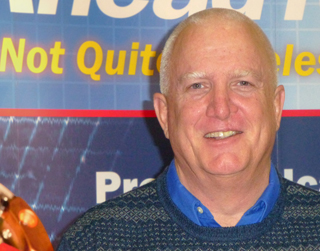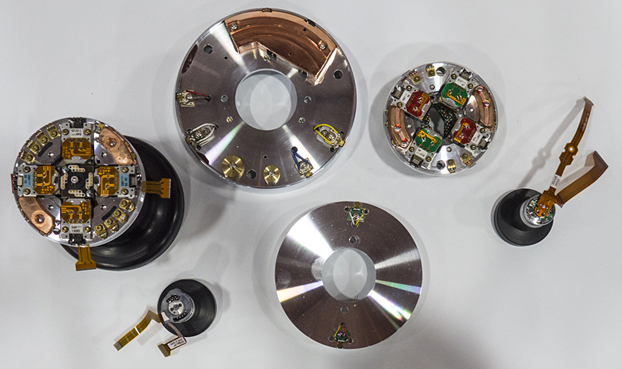SD Video Lives: A Q&A with Pat Johnston of AheadTek

Pat Johnston
ALEXANDRIA, VA.—We all gritted our teeth when the time came to convert our systems to HD gear. However, once converted it seemed like there was just a little overlap before we collectively sailed off into the HD future, leaving SD stranded on the Island of Technology Dead Ends.
Not so fast, though... there are still users and demand for SD recorders, particularly when you think about the huge archives of SD material at nearly every TV station—not to mention government facilities that specialize in archiving our culture and creativity.
One of the critical parts of traditional SD recorders is its rotating video head. Subject to wear and tear, heads fail over time and need to be replaced. AheadTek, located in San Jose, Calif., remanufactures old video heads, bringing new life to recorders that may have cost $25,000 just 15 years ago.
Pat Johnston, the executive vice president for business development at AheadTek, sat down with BE Extra to explain what life is like in the SD world.
BE Extra: AheadTek rebuilds video heads from videotape recorders. Where do most of the heads come from? Betacams? 3/4-inch? 1-inch? Do you do any work with quad (2-inch) heads? What’s the most popular and why do you think it is the most popular?
Johnston: Over the past several years we have seen an increase in demand for U-Matic 3/4-inch drums. Surprisingly, we have rebuilt more upper drums and complete drums for this format than any other format in the past 12 months. The world-wide install base for 3/4-inch was the largest of any of the video tape formats. Many broadcasters are now moving to transfer this valuable content to hard disk or data tape formats such as LTO or Oracle T10K. There is still a large amount of old tape that needs to be transferred, including 1-inch Type-C and even some 2-inch quadruplex.
Get the TV Tech Newsletter
The professional video industry's #1 source for news, trends and product and tech information. Sign up below.
BE Extra: Are these all standard-definition recorders? Are there any HD models that you get heads for rebuilding? If so, which HD products use rotating video heads?
Johnston: We do not have a full-blown rebuilding program for HD video heads at the moment. However, we do on occasion provide head replacement service for SRW series machines when a customer breaks a head on install. Their only other option for the customer is for them to go back to the OEM and purchase another complete drum with a price tag in the neighborhood of $10K. We can help them recover from disaster at a small fraction of their initial investment.
BE Extra: How did you (or AheadTek) get into the business of rebuilding video heads? Did it take special training and equipment to get started?
Johnston: AheadTek is a privately held company that has been in existence since 2002. However, our organization has a long history dating back to 1972 when we were known as CMC. Our original founder was a former Ampex engineer by the name of Tony Mlinaric, and the original product was refurbished 2-inch quadruplex video heads for Ampex and RCA VTRs. In the 1980s and early 1990s, we were part of Kodak and were involved in building complete tape recorders for defense, space and intelligence agencies. Today, beyond video heads, our largest area of business is in the manufacture of various heads that are used as tools in the hard disk manufacturing process. We also build heads that are used by data tape manufacturers to record servo tracks on tape for data storage formats including LTO, Oracle T10000 and IBM3592.
BE Extra: What was a really unusual order you received that you were able to fulfill? Was there a request that you couldn’t handle?
Johnston: We received an inquiry for Hi-8 heads a while back. In the “old days,” we did not get involved with this format. However, support for it is now non-existent, and end-users turn to us for a solution to extend the life of the format. My initial thought was the customer needed playback capability. As it turns out, they need record capability—I learned that many airlines are still providing in-flight entertainment using Hi-8. Our customer is transferring current movies from HDCam SR to Hi-8! We will begin to deliver Hi-8 heads in 2015 for this application and also playback heads for those customers who are ready to start transferring their Hi-8 libraries.
We are also in the early stages of our reverse engineering effort for MII heads. We have several customers clamoring for these heads and one in particular with a substantial library approaching 100,000 cassettes. Heads for this format were discontinued by the OEM (Panasonic) several years ago and the available stock has slowly disappeared. So far, we have not received a request that we couldn’t handle.

These rebuilt video heads from AheadTek were on display at the recent Government Video Expo.
BE Extra: Is there any problem getting parts? Do you build/source your own parts, or do manufacturers like Sony, Panasonic and JVC maintain a supply?
Johnston: The key material for rebuilding video heads is ferrite. We have secured what is considered by us to be sufficient to supply significant volumes for at least another 20 years. Of course, the heads are a key part of every videotape machine, but a simple worn belt or a blown power supply will keep the machine on the repair bench. These are just two examples of spare parts that have been discontinued by the OEMs in recent years. For several years now we have been offeringrefurbishing service for VTR power supplies. It takes time to reverse engineer these items, but it is what is required to extend the life of the VTRs so that our customers can be in position to save as much of their content as possible.
BE Extra: Is there anything else we should know about the technology behind head rebuilding? Does it take a special facility or complex tools?
Johnston:Walking through our facility, one sees quite a mix of technology, tools and equipment that has been amassed over the past 40 years. In fact, the first fixture that was designed for CMC in 1972 to hold ferrite bars during grinding and lapping operations is still in use on a daily basis at AheadTek. We also have many examples of modern technology such as photo lithography, thin-film deposition and reverse-ion etching. We use many high tech tools in our analytical lab to help us find answers to perplexing questions, including an Atomic Force Microscope and a Scanning Electron Microscope. However, the real key to the long-term success of our company is our employees. Many years ago, I was told by a Japanese engineer that no request should be considered impossible; it is just that some are more of a challenge than others. Our team at AheadTek definitely enjoys taking on new challenges, while at the same time providing consistent quality and value on many products over periods of decades.
Bob Kovacs is the former Technology Editor for TV Tech and editor of Government Video. He is a long-time video engineer and writer, who now works as a video producer for a government agency. In 2020, Kovacs won several awards as the editor and co-producer of the short film "Rendezvous."

